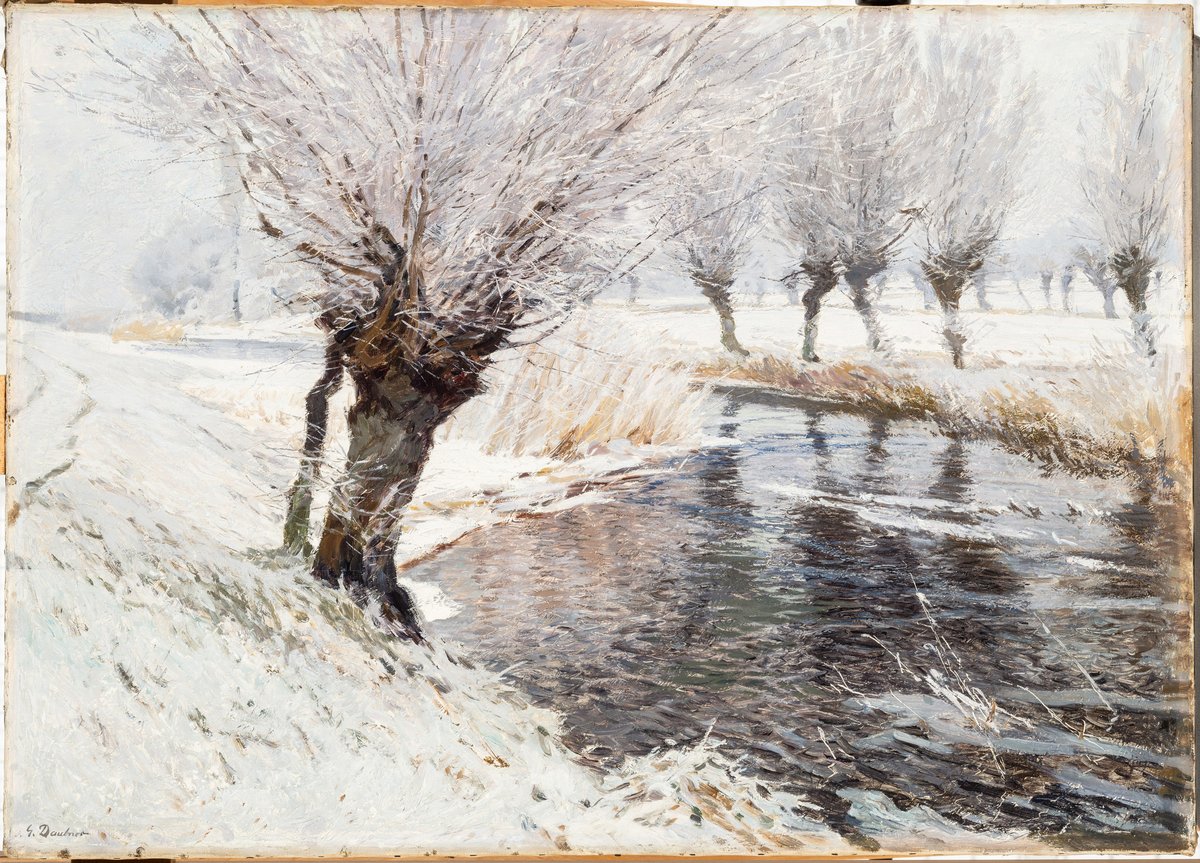
Frost
Department of Art after 1800
| Artist | |
|---|---|
| Culture | German |
| Date | late 19th century |
| Object type | painting |
| Medium, technique | oil on wood |
| Dimensions | 75.7 x 59.3 cm |
| Inventory number | 56.B |
| Collection | Department of Art after 1800 |
| On view | This artwork is not on display |
Gotthardt Kuehl is regarded as one of the most important early German Impressionists, a painter who gained international fame in his lifetime. From 1867 he studied at the Academy of Fine Arts in Dresden and from 1870 at the Academy of Fine Arts in Munich, where one of his masters was Wilhelm von Diez. Kuehl took part in the 1873 Weltausstellung in Vienna, where he first encountered the works of the French Impressionists. He lived in Paris between 1878 and 1889, and was greatly influenced by the naturalist works of Jules Bastien-Lepage and Édouard Manet. To familiarise himself with the Old Masters, Kuehl undertook several study trips to Italy and the Netherlands, closely observing paintings by Jan Vermeer and Pieter de Hooch, among others. He returned to Germany in the late 1880s and from 1893 he lived in Dresden, where he was later appointed professor at the Academy. As an active participant in contemporary art, he was involved in the founding of numerous associations and societies and was one of the artists who brought the impulses of Parisian Impressionism to Dresden.
Kuehl painted landscapes, city scenes and genre paintings, with a particular focus on interiors. The influence of the Impressionists is also evident in his handling of light in his indoor scenes. The social problems of his times are reflected in his work, such as his series of paintings of the orphanage in Lübeck, produced towards the end of the century.
The Budapest painting is a typical example of his naturalistic themes: three girls sit knitting beside the entrance to the orphanage, while a fourth girl, likewise dressed in the green uniform of the institution, approaches them from the foreground, carrying a wicker basket under her arm. The viewer is invited to take an intimate glimpse into the daily lives of the orphans on a slow, shadowy afternoon.
Rebeka Mrázik
Peregriny, János, Az Országos Magyar Szépművészeti Múzeum állagai. 3. rész, Új szerzemények. 1.füzet: a, Festmények; b, Festmények módjára kezelt műtárgyak, Országos Magyar Szépművészeti Múzeum, Budapest, 1914.
Tóth, Ferenc, Donátorok és képtárépítők. A Szépművészeti Múzeum Modern Külföldi Gyűjteményének kialakulása, Szépművészeti Múzeum, Budapest, 2012, p. 97., 119., 171.
This record is subject to revision due to ongoing research.